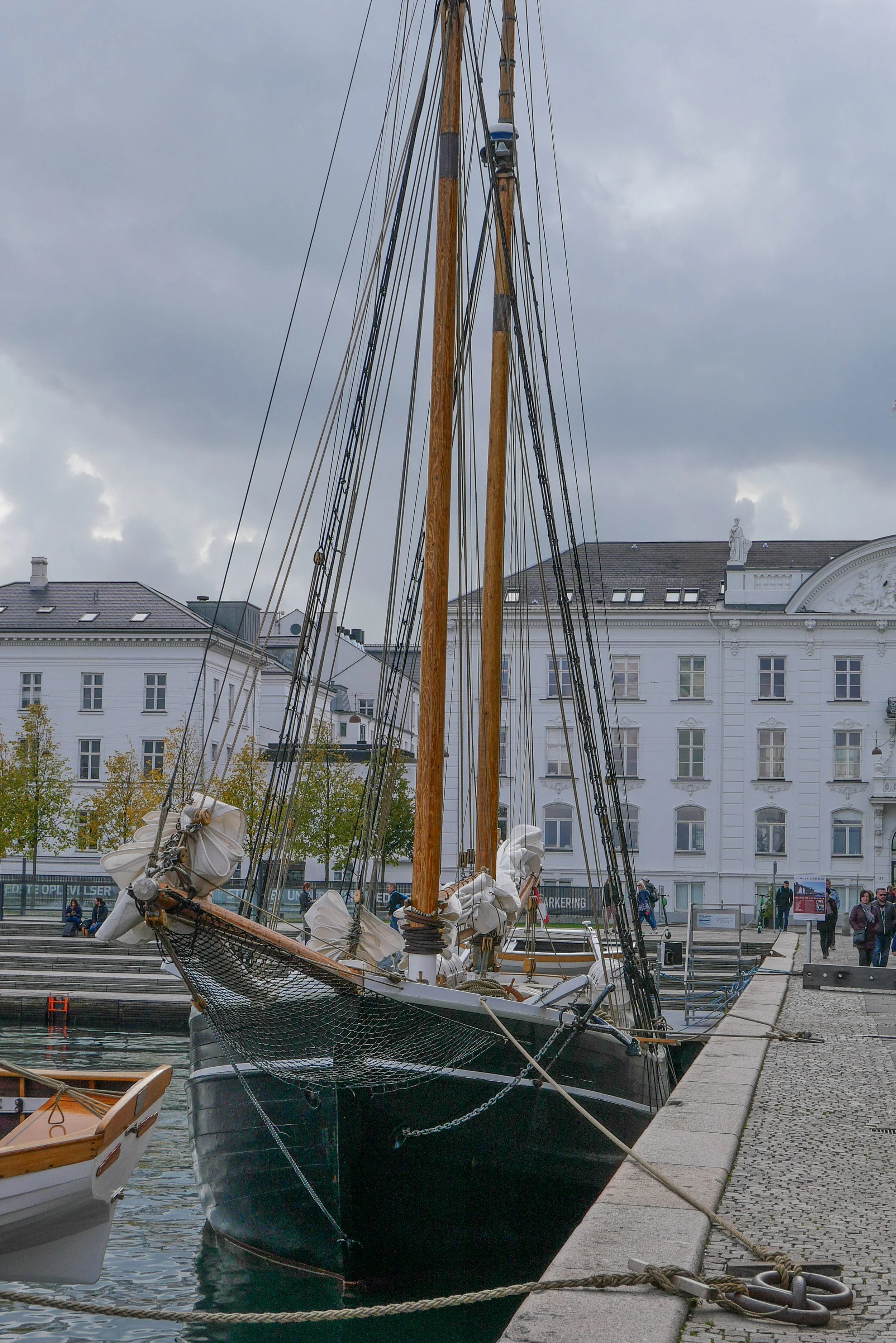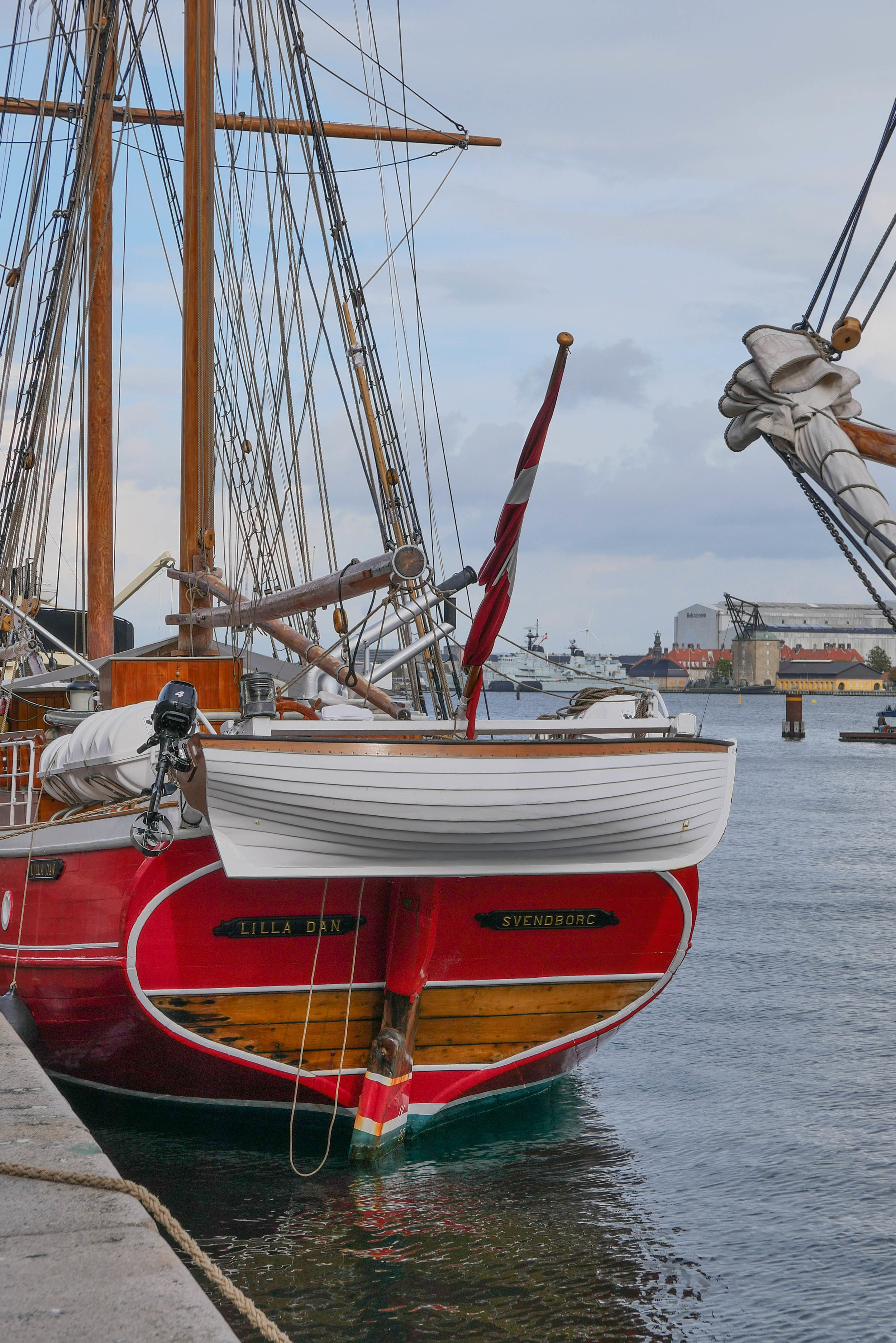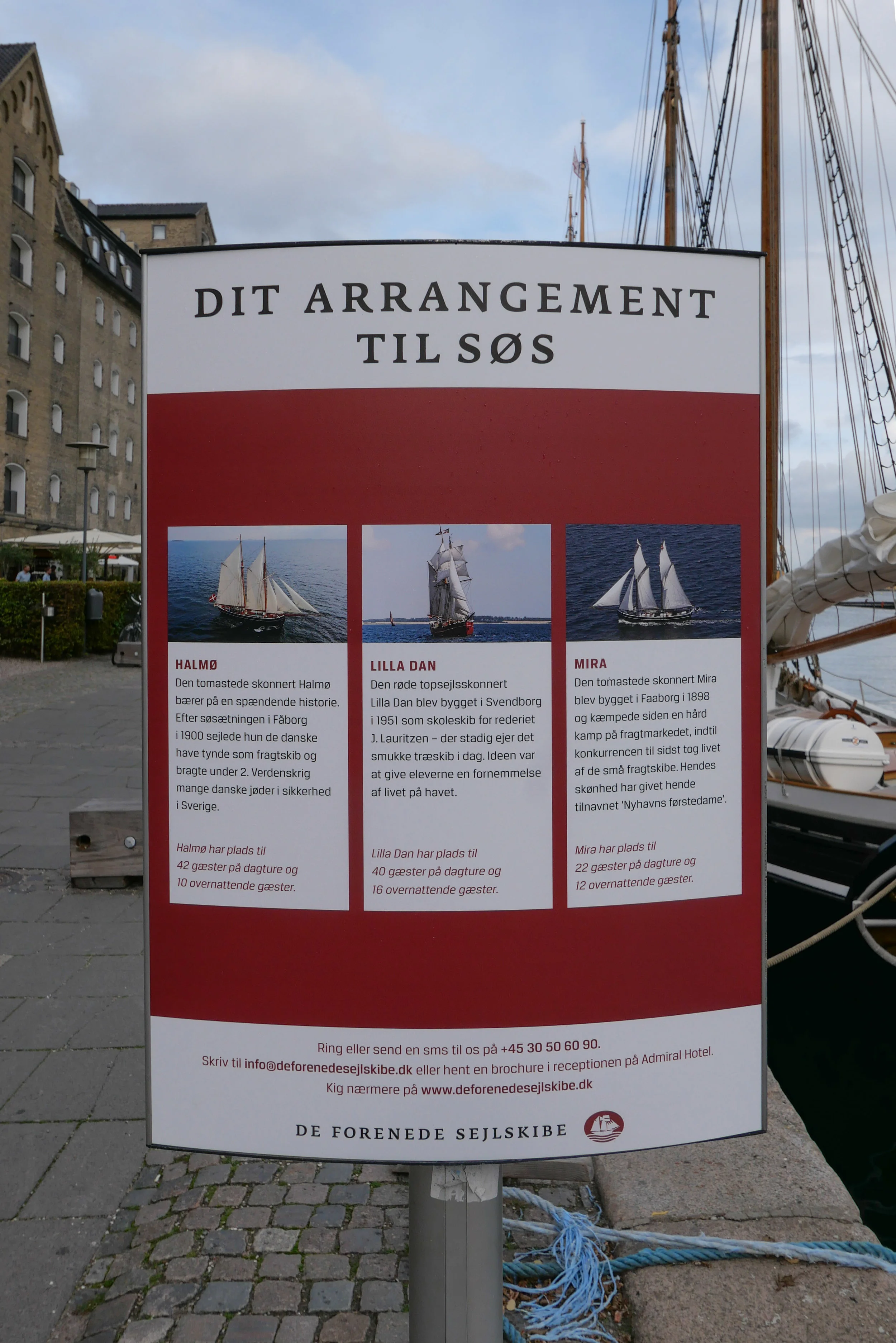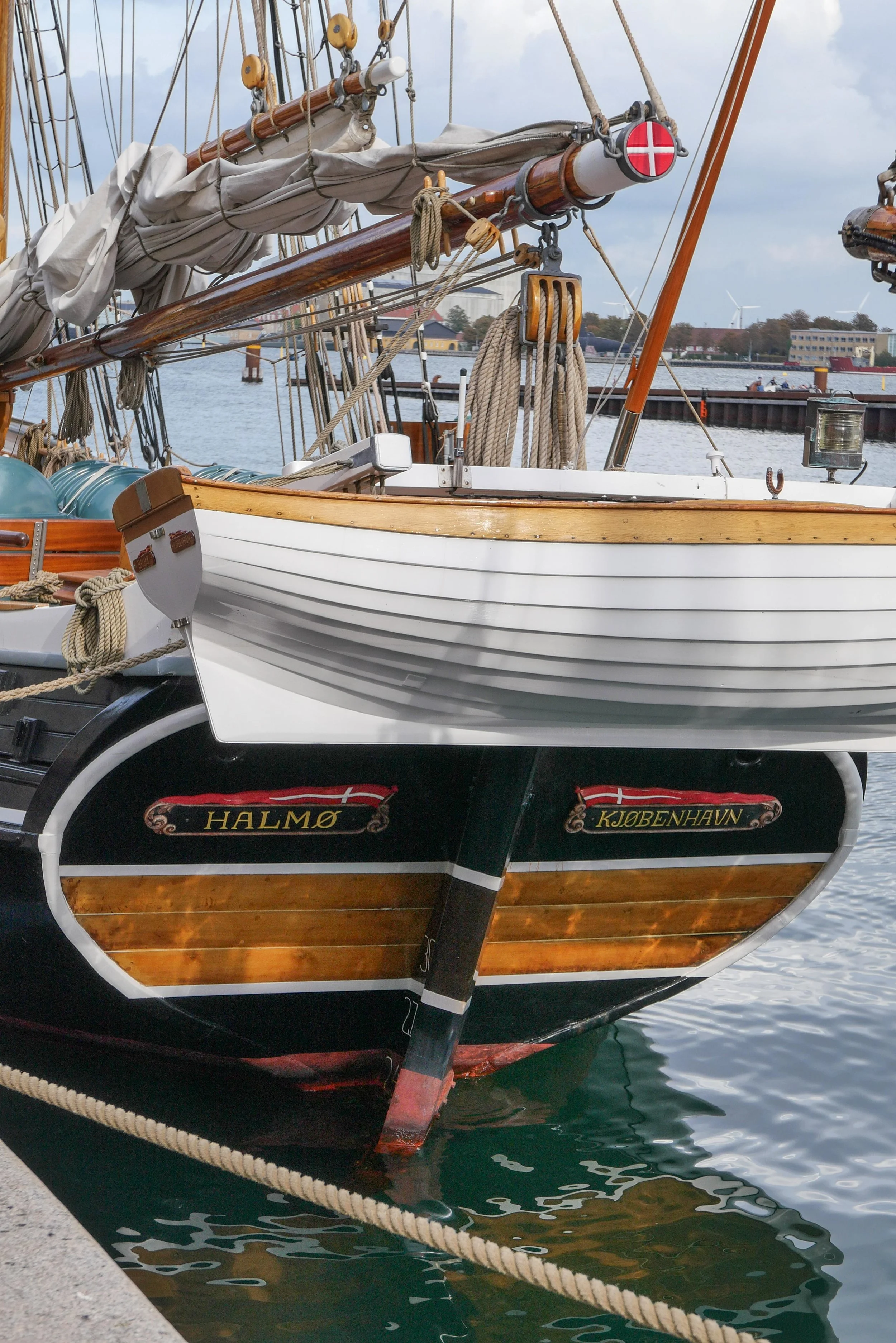De Forenede Sejlskibe / The United Sailing Ships
/Three ships of De Forenede Sejlskibe - United Sailing Ships - are berthed at the quay across the front of the large brick warehouses that wa built as grain stores in the 1780s but is now the Admiral Hotel.
The schooners are the freighters Mira built in 1898 and Halmø from 1900 - both from the shipyards of Rasmus Møller in Faaborg - and the training ship Lilla Dan built in Svendborg in 1951.
In talking about modern design in posts here, much is made of functionality, materials, technology and quality of production but of course these are hardly new concepts. Generally Functionalism describes a style of architecture and design from the early decades of the last century but describing something as functional can now be almost pejorative - implying it’s something slightly basic that works - anything from an orange squeezer to a stripped down and basic kitchen - almost as if buying something that actually works properly is surprising and might even be worth using as a sale pitch.
But in the design and construction of these ships, functionalism and well-crafted and hard-wearing fittings were not primarily about aesthetics but rather a matter of life and death and profit … the parts, and therefore the ship as a whole, had to be robust and, to be efficient and, generally, had to be managed by the smallest number of crew possible. That they are also strikingly beautiful is a bonus that reflects the skill of the craftsmen and the quality of the materials they used.
If you want to trace through how the specific qualities of materials along with craft or manufacturing skills focused on function for the starting point that determines form of a design and how function and form and materials and techniques for working those materials are a framework or control for the design and all working together then a good place to start is to look carefully at an old water mill or a windmill or an early steam engine or, as here, at hand-built sailing ships. Not just at the separate parts but at how the whole functioned.
The harbour has become more and more sanitised and being given the opportunity to see working ships should remind people that the bustle and noise of goods being loaded and unloaded on these wharfs and dock basins was the reason that the city is here and that was the source of its wealth and significance.

















































